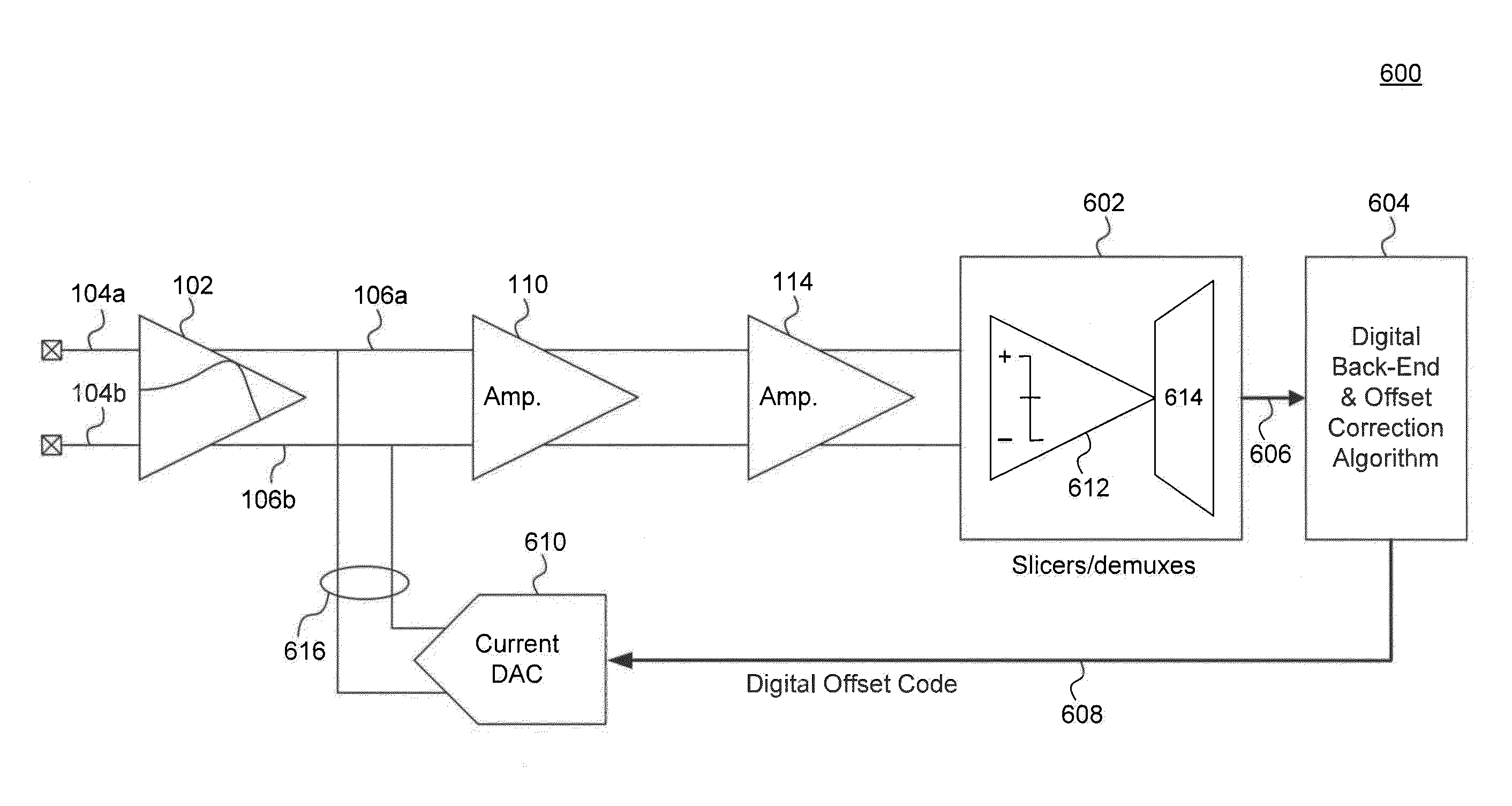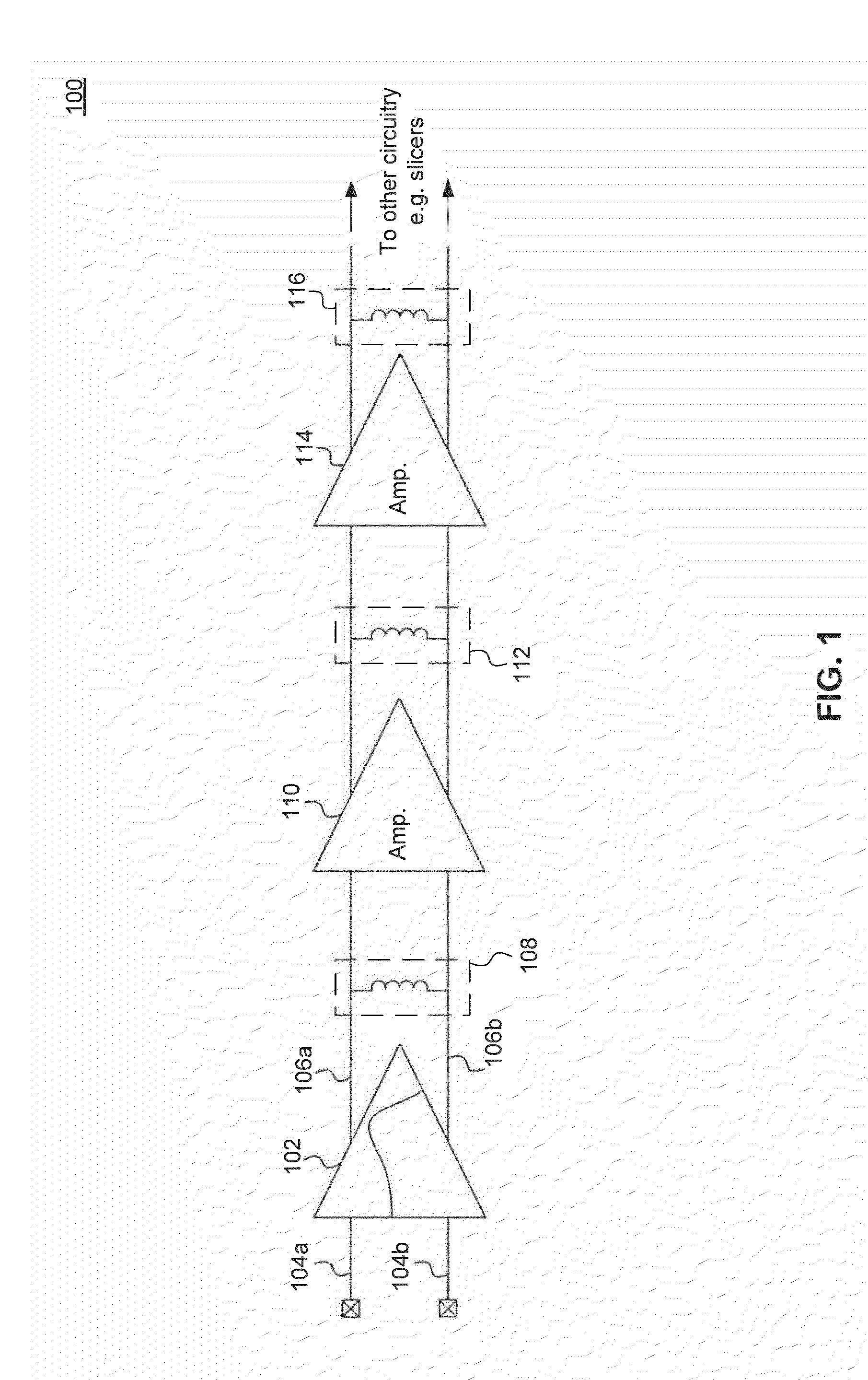High Bandwidth Equalizer and Limiting Amplifier
a technology of equalizer and amplifier, applied in the field of equalization, amplification, offset compensation, can solve the problems of large area, power consumption of analog schemes, and inability to consider cost and circuit area,
- Summary
- Abstract
- Description
- Claims
- Application Information
AI Technical Summary
Benefits of technology
Problems solved by technology
Method used
Image
Examples
Embodiment Construction
[0013]FIG. 1 illustrates a portion of a conventional receiver front-end circuit 100. As shown in FIG. 1, receiver front-end circuit 100 includes a peaking equalizer 102, followed by a plurality of amplifiers 110 and 114. Peaking equalizer 102 is configured to receive differential input data signals 104a and 104b, and to generate differential output data signals 106a and 106b. Differential output data signals 106a and 106b are coupled to amplifiers 110 and 114, before being provided to other circuitry, such as data slicers, for example. Amplifiers 110 and 114 may be limiting amplifiers, configured to attenuate or limit the portions of signals 106a and 106b that are above a certain level, in order to prevent saturation of subsequent stages.
[0014]For high data rate applications, differential input data signals 104a and 104b may have higher bandwidth than the respective bandwidths of equalizer 102 and amplifiers 110 and 114. Traditionally, therefore, large inductors, such as inductors 1...
PUM
 Login to View More
Login to View More Abstract
Description
Claims
Application Information
 Login to View More
Login to View More - R&D
- Intellectual Property
- Life Sciences
- Materials
- Tech Scout
- Unparalleled Data Quality
- Higher Quality Content
- 60% Fewer Hallucinations
Browse by: Latest US Patents, China's latest patents, Technical Efficacy Thesaurus, Application Domain, Technology Topic, Popular Technical Reports.
© 2025 PatSnap. All rights reserved.Legal|Privacy policy|Modern Slavery Act Transparency Statement|Sitemap|About US| Contact US: help@patsnap.com



